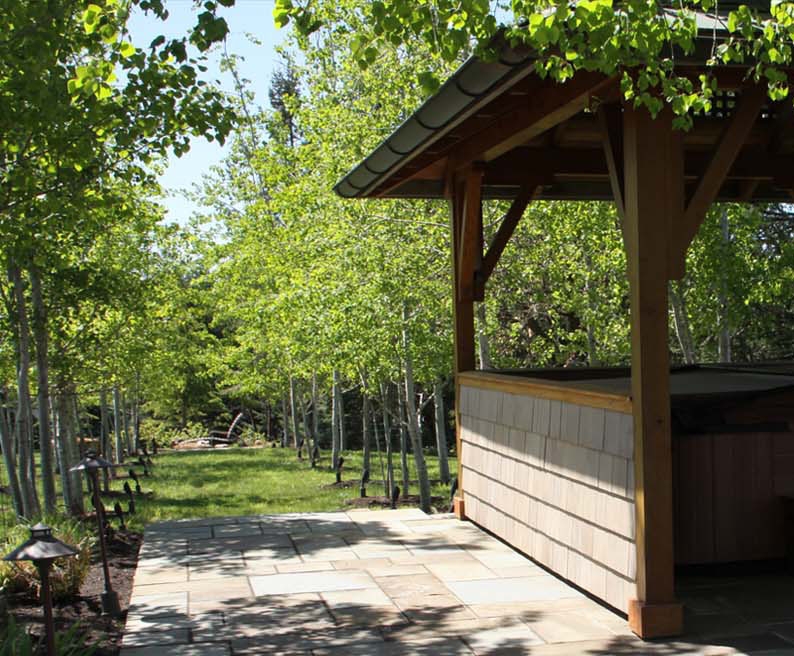
Is this harsh winter weather giving you a bit of cabin fever and making you hunger for garden time? It’s a great time to start dreaming, but while you are stuck indoors, take the time to appreciate the architectural qualities of your home. A truly integrated garden will reflect the style and proportion of the architecture in the outdoor experience. We have written before about the role outdoor spaces play in providing beautiful and functional outdoor rooms; however, gardens can enhance the expression of your home in other ways.
Complement your home by paying close attention to the proportion and scale of the house, and extend those same design principles in your landscape. For example, tall evergreen trees that would dwarf a single-story bungalow can provide an appropriately scaled backdrop to a larger home. Likewise, if you have a large central room in your home, looking out onto a similarly proportioned outdoor space extends the indoor experience – visually in the winter and physically in the summer. It creates a harmonious composition, marrying the home and the garden. The use of similar proportions of space supports the continuity between the architecture and the garden.
In addition to mirroring the proportions of interior spaces, the composition of views from inside to out complements and supports the interior design. Each window is a landscape painting that adds character to your home throughout the year. Trees with sculptural branches, flowering plants and evergreen elements are living art that communicate the inherent beauty of the seasons. The orchestration of textures, sizes, and annual transformations of plants frames desirable views and camouflages the things you’d like to ignore. Artful lighting expresses additional dimensions, supplying glow and sparkle after the sun sets.
Plants can be used to extend the architectural lines of your house, focusing views on important architectural elements such as entryways. Evergreen hedges extend walls, tree trunks and narrow conifers march rows of columns out into the landscape. The simple choice of plants that will not exceed the heights of ornamental elements like windows or molding is often overlooked. Conversely, filmy foliage and contrasting textures can add depth and interest while hiding utilitarian spaces or weak architectural elements.
When the architecture of a home strongly expresses the style of a particular period or region, there is always a corresponding genre of plant palette and stylistic use. Mimicking these garden expressions is a very sophisticated way to emphasize the architecture. A good primer for historical homes is Favretti’s book, For Every House a Garden. This text explores both compositional strategies and period-authentic plants that were used in American garden design from colonial times through the 1940s. While a to-the-letter historical approach may seem intimidating, this is a particular passion of ours and where authenticity is a priority, we are happy to explore this with you. Plants can also enhance the expression of a regional style – such as figs and rosemary for a Mediterranean home, olives and lavender for a Provencal style house, or bold graphic textures for a mid-century modern building. Simply employing construction materials that are from the palette of the home – such as brick, exposed timbers, ornate ironwork, clean concrete forms etc. – when designing the outdoor spaces can harmonize with the architecture in a few simple moves.
While these strategies are excellent to complement and emphasize the architectural style of your home, what happens if the style of the house falls flat for you? Landscape design provides a great avenue to add personality to your house if you feel it is lacking. A well planted garden can soften a stark façade, while added outdoor elements like trellises or arbors can add depth and character to a less-detailed exterior. A thoughtful landscape design that fully considers the existing architecture, style and proportion, adds color and life well beyond the limitations of the walls of the house, and expresses the unique character of every home and the people who inhabit it. Here at Lovinger Robertson Landscape Architects, the interplay between the home and garden is our passion, and we would love to help you start planning your landscape as we eagerly await the spring.